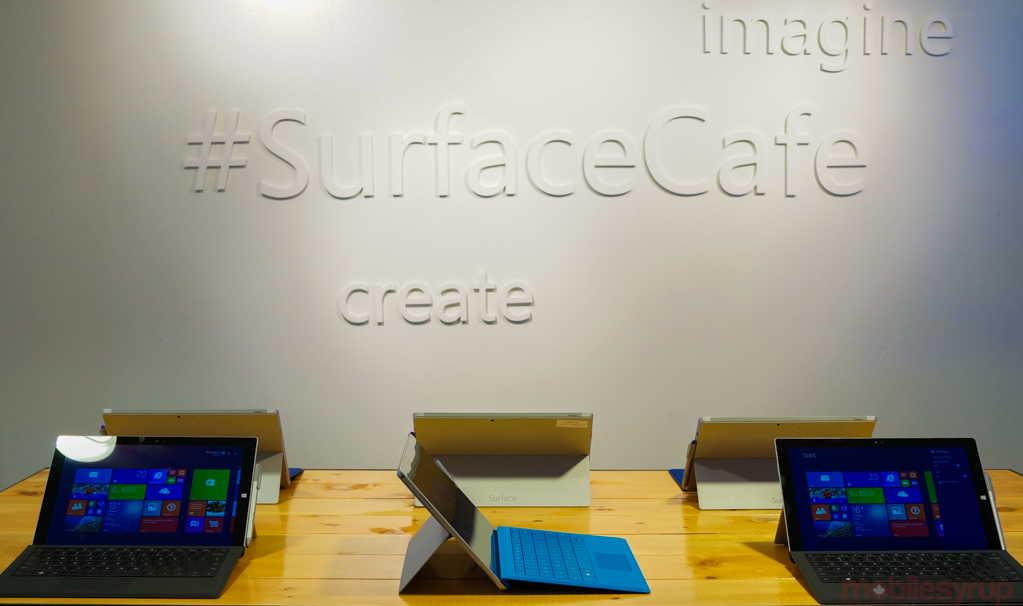
It has taken a long time, but Microsoft has finally figured what people want — and don’t want — from its Surface tablet.
Today marks the public availability of the 128GB and 256GB Intel Core i5 versions of 12-inch Surface Pro 3, and we had a chance to play with the new device at a small press event in Toronto prior to the public opening of the Surface Cafe.
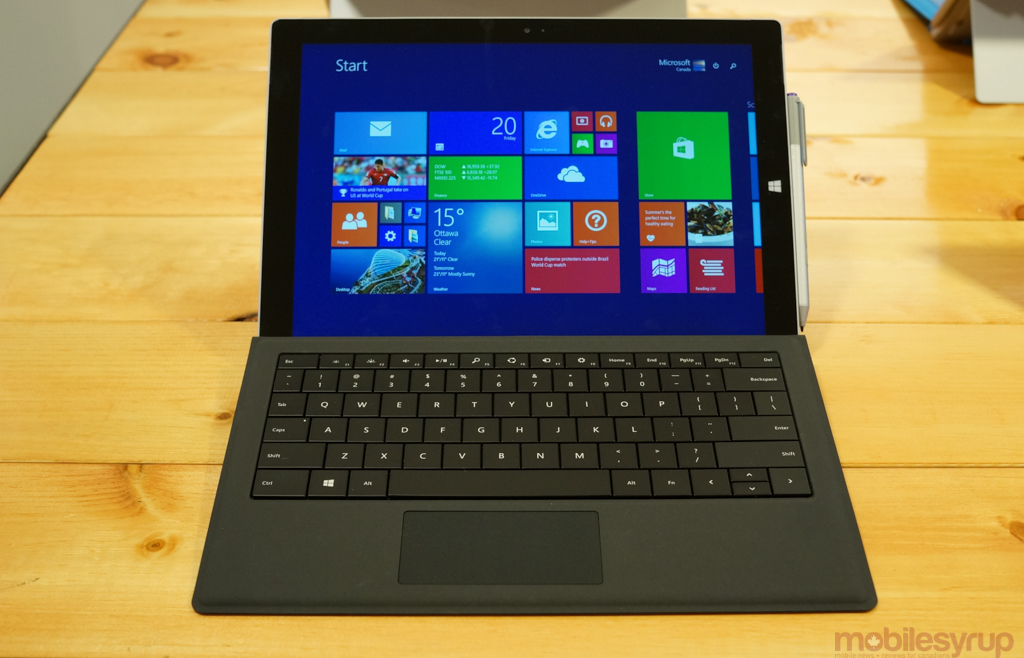
While many are already familiar with the Surface, which envisions a single device for most users’ computing needs, the Surface 3 Pro is considerably bigger than its predecessor, necessitated by its larger display, but simultaneously feels less awkward to use due to its 3:2 aspect ratio.
The Surface Pro 2 was 10.6-inches, with a 16:9 wide-angle screen resolution of 1920×1080 pixels. The 12-inch Surface Pro 3 sports a resolution of 2160×1440 pixels, and even with its oversized chassis is more natural to use as a tablet in portrait mode.
Starting at $1049 CDN for the 128GB Core i5 model and increasing to $1349 for the 256GB model, all Surface Pro 3 models come with a magnetic pen for jotting notes and creating art, but the much-improved keyboard, renamed Surface Pro Type Cover, costs an extra $129.99.
The company insists that the Surface Pro 3 is a laptop replacement, but without the Type Cover, it is hampered by a far less usable virtual keyboard.
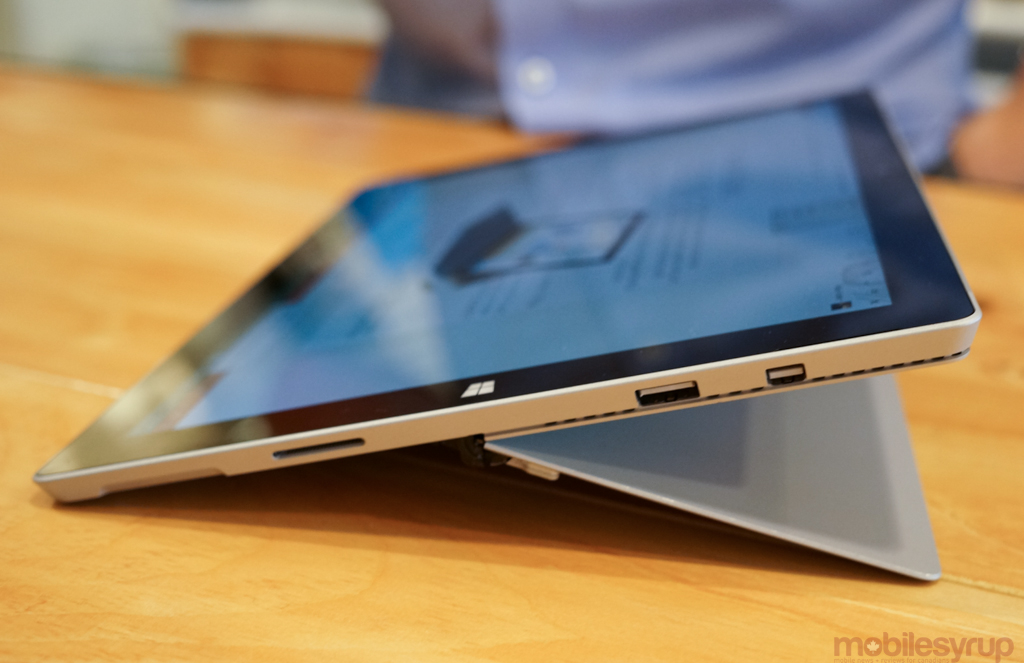
To alleviate some of that typing strain, the Surface Pro 3 sports a new continuous kickstand which, unlike its predecessor, is no longer limited to two positions.
In our brief tests, the hinge was tight and stayed put, both on a table and in our laps, when we engaged it, but even in an ideal position the Pro’s “lapability” pales next to even the cheapest notebook.
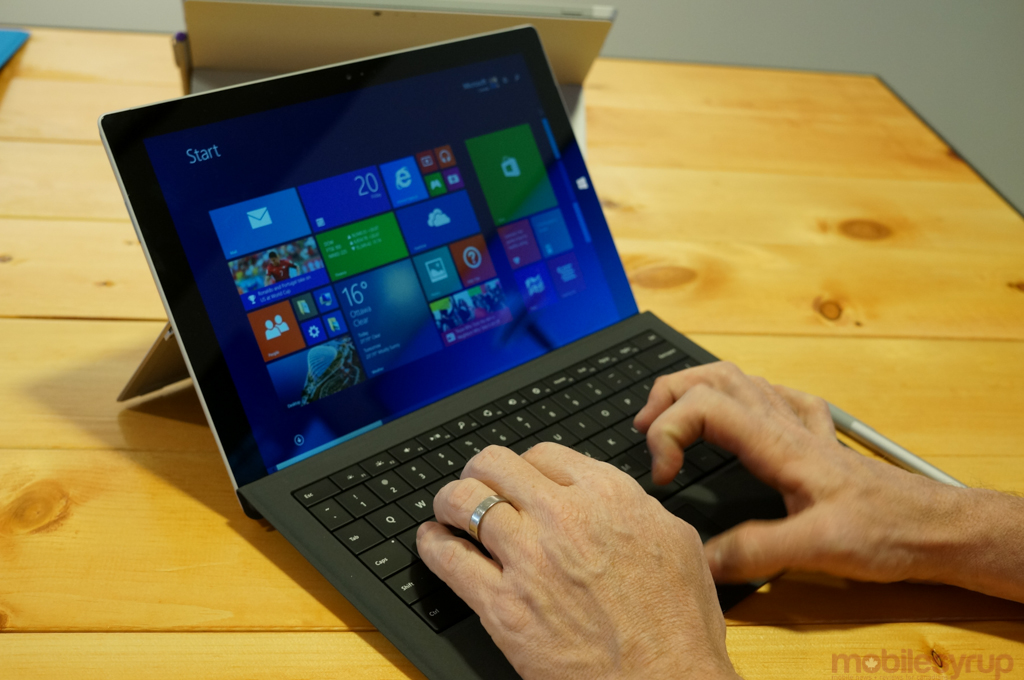
The new Type Cover, though, is excellent. It spans a wider area, so each key is bigger, and appeared more responsive from my brief tests. The hinge is also more secure, and glides up slightly on the lower bezel for a more comfortable typing angle.
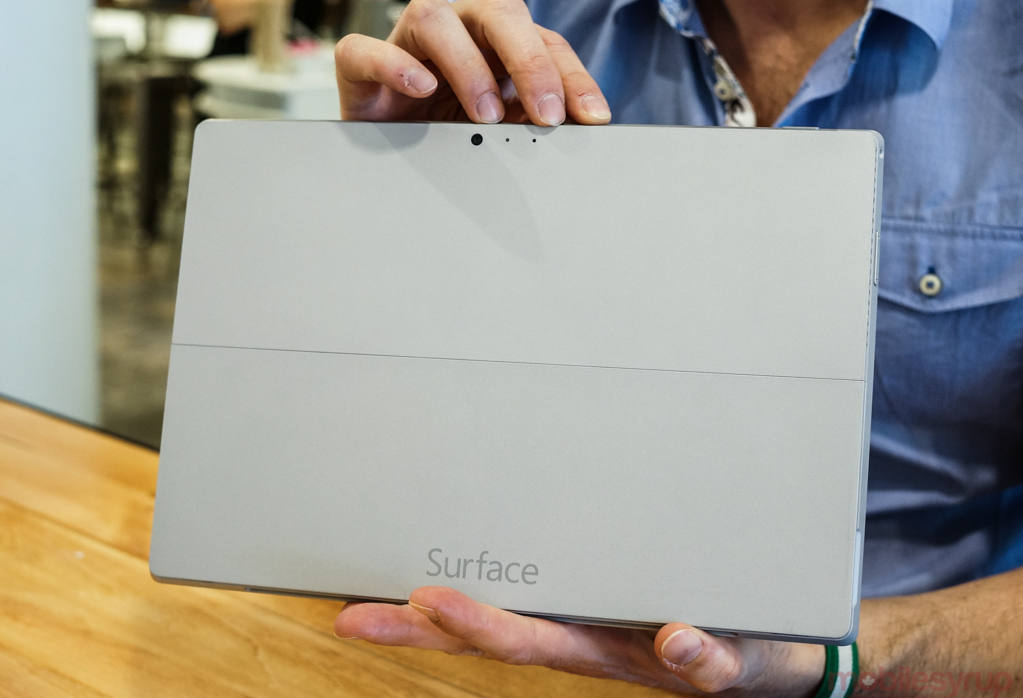
And a notebook replacement this is: its size, weight and price reinforces its intended market segment, and Microsoft is happy to point the average consumer to the cheaper, lighter, ARM-based Surface 2.
Indeed, the Surface Pro 3, like its predecessor, has a large vent and fan array for expelling hot air from the Core processor, and battery life, at seven to nine hours, is good but not iPad or Android great. Of course, neither the iPad nor most Android tablets boast USB 3.0 and MiniDisplay ports.
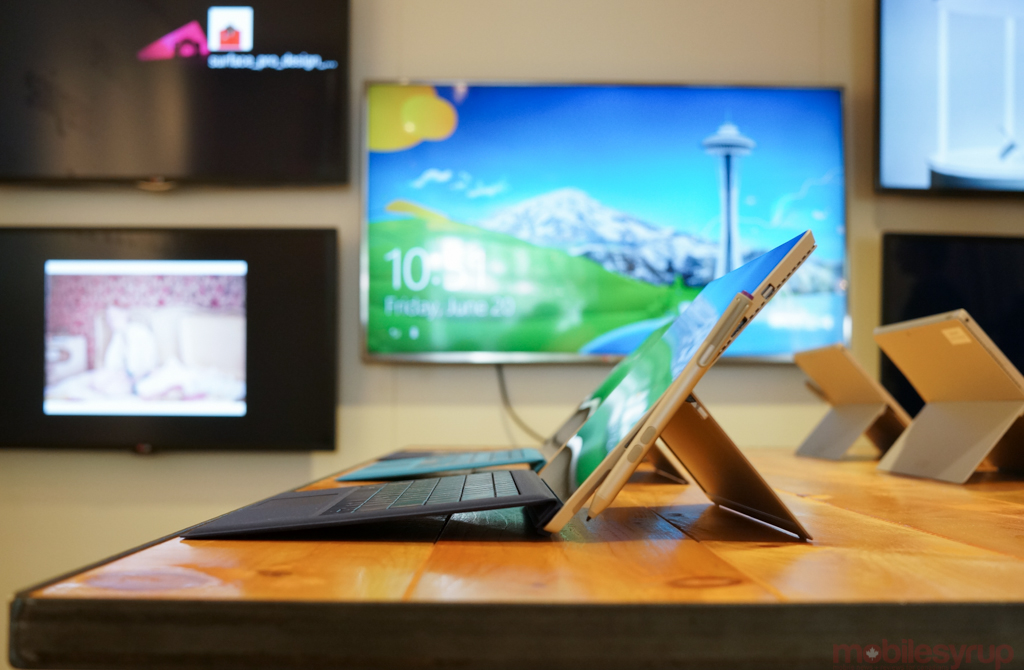
As a Windows-based workhorse, the Surface Pro 3 is the MacBook Air of the Microsoft ecosystem. It’s well-designed, high-performing and extremely versatile. This is Windows 8 in its ideal environment, stripped of performance-sucking bloatware and optimized for the high-resolution hardware on which it is pre-installed.
Its success will likely hinge on whether Redmond can convince potential customers that Windows 8.1, a massive improvement over Windows 8, is a worthy investment.
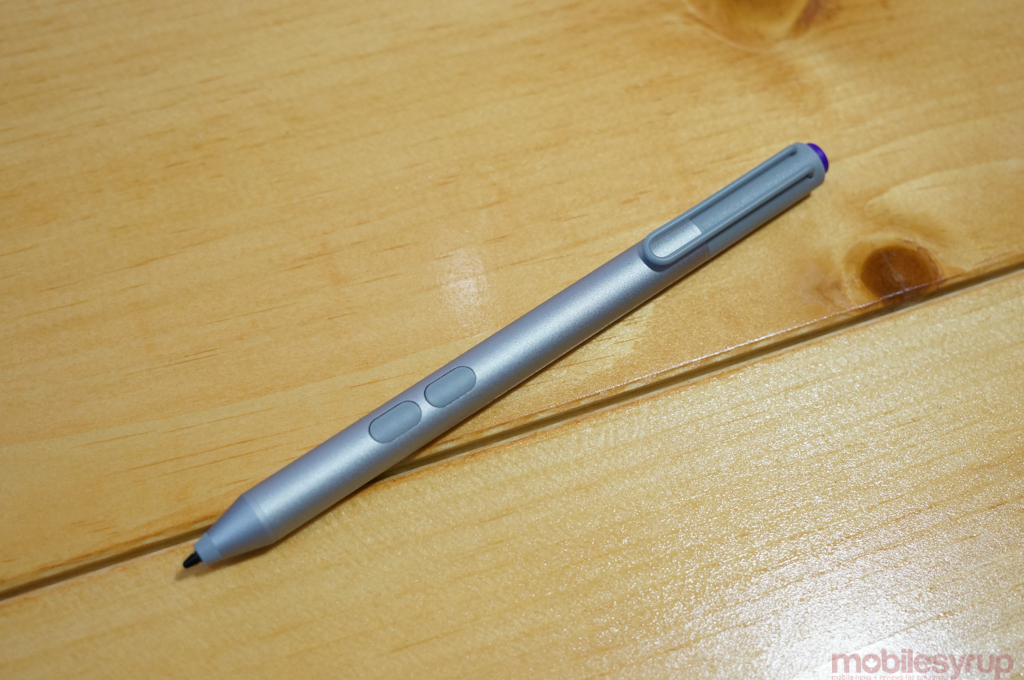
The Core i5 versions ship on June 30th, and are available now in-store; the Core i3 and i7 versions ship on August 1st.
MobileSyrup may earn a commission from purchases made via our links, which helps fund the journalism we provide free on our website. These links do not influence our editorial content. Support us here.


